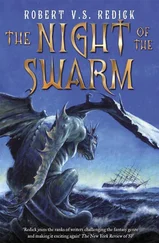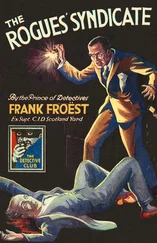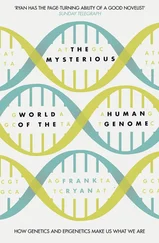The answer was a decisive no.
But the individual neurons of a human brain weren't intelligent either. For humans to attain the brain-to-body ratio that made them intelligent, it took one hundred billion neurons each. It was conceivable that an intelligent organism smaller than a human could make do with fewer cells, but there was no altering the size of the molecules of which the neurons were composed – and without a critical mass of neurons, there could be no intelligent spark. That was the limiting factor for ants, who seemed to possess non-conscious intelligence but whose brains could never attain a higher neural capacity because they lacked sufficient cells. In fact, since ants didn't breathe through lungs but absorbed oxygen through their body surface, their growth was inherently restricted. Their respiratory system would fail if they exceeded a certain size, so their brains had no chance to develop any further. In evolutionary terms, ants and their fellow insects had reached a dead end. Scientists had therefore concluded that the smallest possible size for an intelligent life-form was roughly ten centimetres, which meant the chances of encountering a scuttling Aristotle were practically nil. Single-cell intelligence seemed out of the question.
All that was at the back of Weaver's mind as she sat down to program the computer to link mental capacity and single-cell organisms in a meaningful combination.
In the hours following the discovery in the lab, the general mood was one of scepticism. Could the jelly really be intelligent? Single-cell organisms weren't capable of creativity and couldn't develop self-awareness. No one contested that a sizeable number of single-cell organisms theoretically corresponded to a brain or a body. The blue cloud filmed by the URA near Vancouver Island had evidently consisted of billions of cells – but did that mean it could think? And even if it could, how was it supposed to learn? How would the cells communicate? What had to happen for a conglomerate of cells to become a higher entity?
How had it worked for humanity?
Either the jelly substance was nothing more than insentient goo, or there was a trick to it.
The jelly had steered whales and crabs.
Computer programs developed by Kurzweil Technologies used billions of bits to simulate neurons that worked together as a brain. Artificial intelligence of one kind or another was already being used throughout the globe. AI systems were capable of learning, and there was even a sense in which they used their own creativity to further their development. None of the AI researchers claimed to have created consciousness , but their work already posed the question as to when a mass of tiny identical parts could be classed as alive – and whether life could be generated artificially in that way.
Weaver was now in possession of one of the latest generation of artificial brains, having approached its inventor Ray Kurzweil directly. Her first move was to save a backup copy. Then she set about dismantling the original into its individual electronic components, breaking down the bridges and turning it into an unstructured swarm of tiny units. She tried to imagine breaking down a human brain. What would she have to do to get the cells to come back together and re-create the thinking whole? Billions of electronic neurons were swarming all over her computer, tiny bits of data with nothing to bind them together.
She tried to imagine that they were single-cell organisms.
Billions of single-cell organisms.
She thought through the next steps. It would be best to stick as closely as possible to the facts as she knew them. After some reflection, she constructed a three-dimensional space and gave it the physical characteristics of water. What did single-cell organisms look like? They came in all kinds of different shapes – rods, triangles, stars, sometimes with irregular outlines, sometimes with flagella – but it made sense to settle for the simplest. She decided on spheres.
Step by step the computer became an ocean. Weaver's virtual organisms rolled and spun through their electronic world. Maybe she should add currents, so that the virtual space mirrored the deep-sea environment. No, that could wait. First there were some major questions to address.
So many units. How could they give rise to an intelligent being? There weren't any limitations on maximum size. None of SETI's assumptions about size was relevant to water-dwelling organisms, since the forces affecting bodyweight were different under water. An intelligent marine-based life-form could be incomparably bigger than any land-dwelling organism. SETI's scenarios barely accounted for water-based civilisations, because any such civilisation would be beyond the reach of radio waves. Besides, it seemed unlikely that an underwater species would be interested in space or other planets – unless it was planning to cross the universe in a travelling aquarium. But a water-based scenario was what she needed now.
When Anawak arrived in the JIC thirty minutes later, she was staring at the screen, forehead knitted. She was cheered when she saw him. Since his return from Nunavut, they'd talked a lot about themselves to each other, and Anawak seemed more confident and self-assured. The dejected Inuk whom she'd found in the hotel bar had vanished in the Arctic.
'How are you doing?' he asked.
'My brain's in knots. Both brains, actually. I don't know where to start.'
'What's the problem?'
She told him what she had done so far. 'I'm not surprised you're stuck,' he said. 'You're doing a great job with the computer, but there's some biology you need to know. The brain can only think because of its structure. For the most part our neurons are pretty much identical – it's the way in which they're connected that allows them to think. It's like… Imagine a city.'
'London.'
'It's been shaken out of place and your job is to put the houses and streets back where they were. There are heaps of possibilities, but only one will give you London.'
'Fine, but how does each house know where it belongs?' Weaver sighed. 'No, scrap that question. Let's not worry about how the brain cells are connected. What I don't get is how they can join together and form something that's more intelligent than the sum of their parts.'
Anawak rubbed his chin thoughtfully. 'Think of the city again. In one of the streets a tower block is being built by a team of, say, a thousand workers. The workers are all identical – clones. Each has a specific task – a particular set of actions that he's employed to carry out. None of the workers has seen the blueprint for the building, yet together they're capable of constructing it. But imagine what would happen if you switched those guys around. There's a chain of ten builders passing bricks along the line, and you swap one for a man who tightens screws – well, you're going to cause trouble.'
'I see. So provided they stick to their jobs, the whole thing works fine.'
'Now, you could say that it only works because someone's been telling the workers what to do, but that someone couldn't build the block without them. Each presupposes the other. The plan gives rise to the workers' joint effort, and the workers' joint effort gives rise to the plan.'
'Is there someone who plans?'
'Maybe the workers are the plan.'
'Well, in that case all the workers would have to be coded slightly differently – which, come to think of it, they are.'
'Exactly. You see, the workers only seem to be identical. So, let's start at the beginning again. There's a plan. The units are all coded differently. What else do you need to make them into a network?'
Weaver thought. 'I guess they have to be willing to co-operate.'
'It's more straightforward than that.'
Suddenly she saw what he was getting at. 'Communication. A common language. A signal.'
Читать дальше












